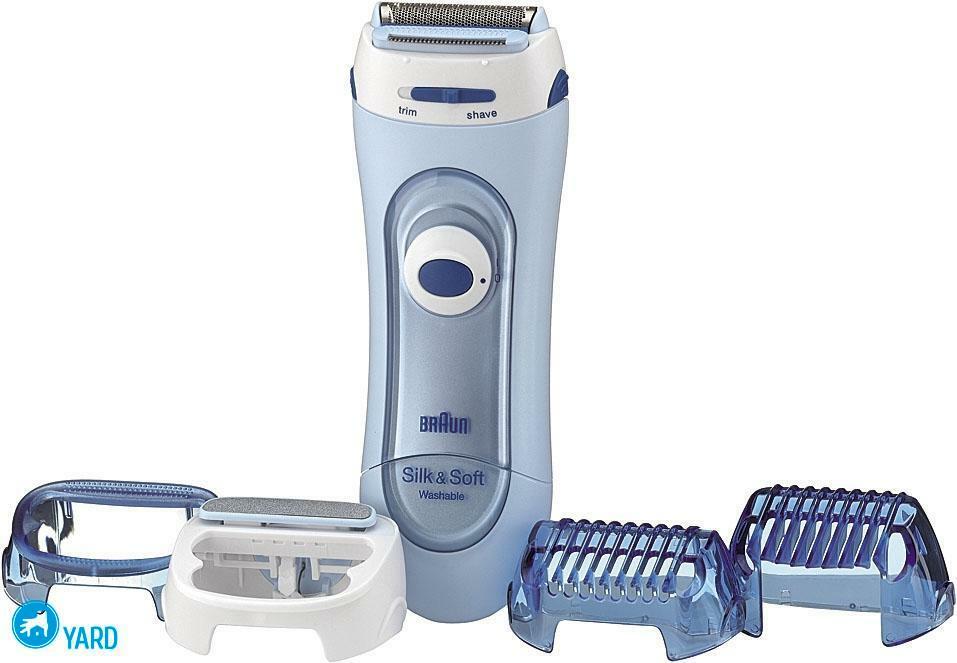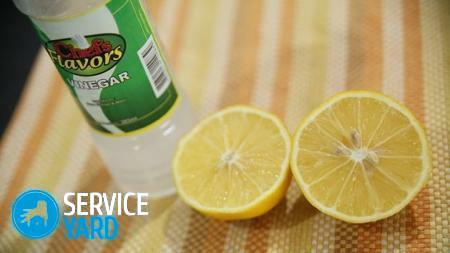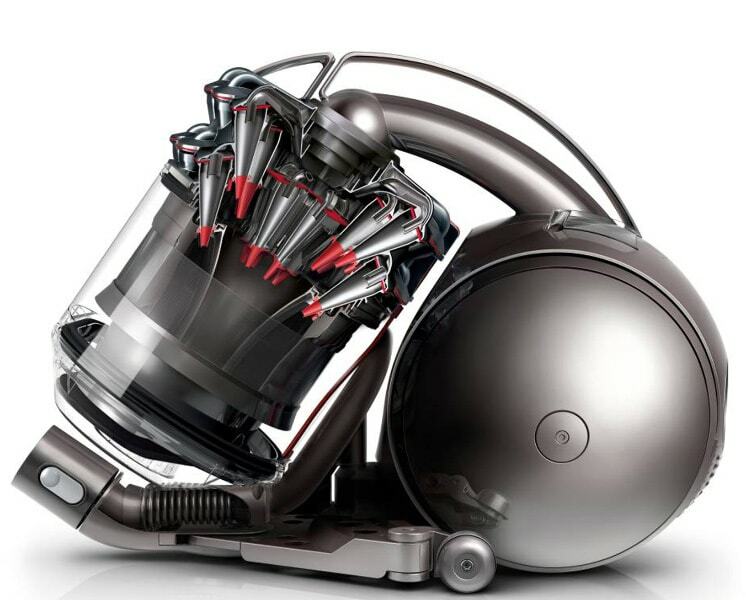In the pet store, a novice aquarist sees many beautiful and unusual aquatic inhabitants. Naturally, he wants to get the most spectacular of them. However, before buying, you should take into account the conditions of each type of food - after all, often, the more unusual the fish, the more whimsical it is in care. Therefore, to settle their first aquarium, we advise you to purchase unpretentious pets, which even a child can take care of.

Contents:
- Best aquarium fish for a newcomer of the family of the Pecilian
- Best aquarium fish for the newcomer of the carp family
- Best aquarium fish for the newcomer of the cichlids
- Best aquarium fish for the beginner
- Best aquarium fish for the beginner of the labyrinth family
- What aquarium fish for the beginner to buy
aquarium fish for a newcomer to the family of Pecilia
This group is one of the most popular and favorite among owners of underwater pets. Small and inexpensive, these fish are ideal for beginners. They refer to viviparous, so in time you can increase the number of individuals in the aquarium without unnecessary expenditure.
Molliesia

Cute and bright fish with a large selection of interesting colors are most supportive to beginner aquarists and forgive them for many mistakes. The only exception is breeding mollies-ballon - it's better to refuse such a purchase to fans.
Pros:
- The most enduring in their family;
- Can stand up for themselves in a common aquarium;
- Eat everything they give, calmly pick food from the bottom;
- Get on with most fish, except aggressive predators;
- Live from 4 to 8 years, depending on the conditions.
Cons:
- Prefer a stable water temperature in the narrow range of +24. . + 28 ° C;
- Requires a lot of greenery and intensive lighting;
- When breeding, it is difficult to keep offspring from eating other fish.
If you are not sure that you can provide proper care to pets, choose mollieses of modest coloring - these species are more tenacious and unpretentious. Too bright rocks are artificially removed and will bring more trouble.
Guppies
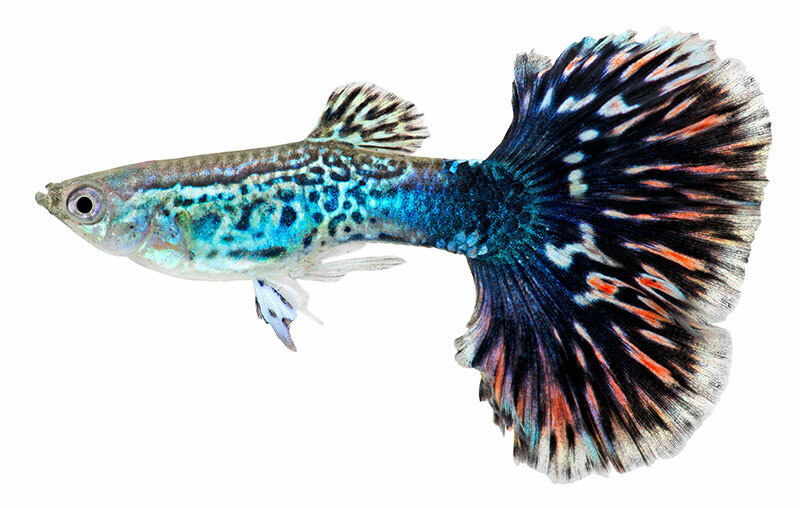
The males of the guppies are brightly colored, often have a veil tail. Unattractive females are slightly larger, but they need 3-4 pieces for each "boy".These calm fish are so undemanding in care that they can live even in a three-liter jar. True, this applies only to "mongrel" guppikam, and not imported. Advantages:
- In a small aquarium for 15-30 liters can live up to 15 individuals;
- No need to spend money on lighting, filtration and aeration equipment;
- Omnivorous, calmly survive a week-long hunger strike;
- They are undemanding to the water temperature: they feel great both at +18 and +30 ° С;
- Get along well with other aquarium residents;
- Easily reproduce, the female at a time brings up to hundreds of fry.
Disadvantages:
- Relatively short life - about a year;
- You can not keep in one aquarium with a large aggressive fish;
- They can eat their own offspring.
Guppies give birth to fry up to 8 times in their short life, but they are not good parents. If there is no thick duckweed in the aquarium where the kids can hide, put the "mother" in a separate jar, and after the appearance of the offspring, immediately return it to the rest.
Swarthwords

There are 25 species of these fishes of the most vivid color. They are larger than a guppy: the female reaches 12 centimeters in length, the males are usually slightly smaller. Some representatives of this species are pugnacious, therefore it is better to reduce the male population to a reasonable minimum: for each individual there must be at least 2 females.
Pluses:
- Minimal requirements to the conditions of the maintenance: it is enough usual filtration and aeration, periodic change of water once in 1-2 weeks;
- Quietly transfer the short-term drop in temperature in the aquarium to +15 ° C;
- Like all viviparous are easy to breed;
- In food are unpretentious, but dry and live food is better alternating;
- Racks to diseases, live to the age of 5 years.
Disadvantages:
- Need a more spacious aquarium than guppies( minimum 50 liters), while its width is very important;
- Males can fight with each other if they do not have enough females;
- Do not get along with veil fish and pull out their tails.
Remember that the swordsmen are amateurs of jumping. To prevent fish from perishing, always cover the aquarium with a lid.
Best aquarium fish for a newcomer of the carp family
Compared with the bright color of people from tropical countries - the family of Pecilia - carp fish have more calm and monochromatic colors. Although some specimens are extravagant enough to decorate the aquarium with their presence.
Goldfish

There are many variations of this fish: ranches, telescopes, oranges, etc. But for a beginner, the best choice will be valeleths. However, they are considered to be one of the most beautiful representatives of their family.
Pluses:
- Unpretentious in food and undemanding to the temperature of water, preferring more comfortable for themselves +18 ° C - the main thing is that there were no sharp drops;
- You can partially replace water in the aquarium - 10-15% each week;
- Able to last a week without food, if before eating right, although they surely will eat seaweed;
- With good care live to 15 years.
Disadvantages:
- Need a large aquarium - 40-80 liters per each individual;
- Prone to overeating - you need to monitor the amount of poured food and always soak the dry mixture;
- Produce a lot of waste that requires careful filtration of water;
- Poorly tolerate the neighborhood with more aggressive "fellows", for example, comets.
Despite the diversity and beauty of goldfish, only newer tails can be recommended for a beginner - all other options will require the aquarist to experience and know the specifics of their contents.
Danio
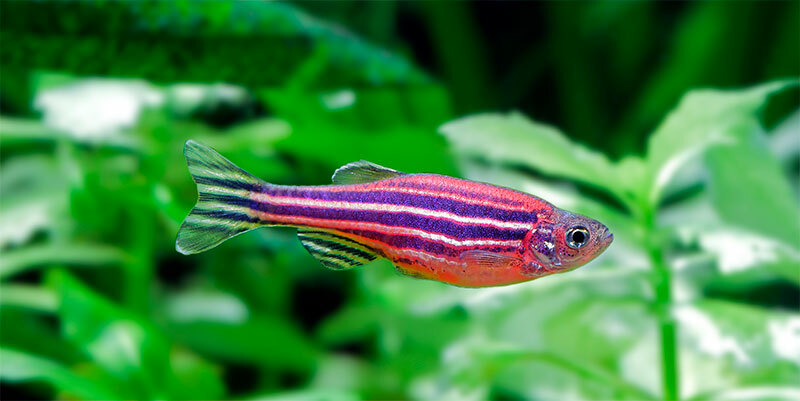
These schooling and very mobile fish are an ornament of many aquariums, but they require enough space for their swims. Their color varies from crimson-red to celestial blue, the lifespan reaches up to 3 years. Because of the small size( about 5 cm) and the habit of living in flocks, zebrafish should be populated at least 6 animals at once.
Advantages:
- No special conditions are required;
- Omnivorous;
- Normal feel at a water temperature of +16. . + 28 ° C;
- Unspoken;
- Not bad transfer the first "moving".
Disadvantages:
- Can jump out of the water, so a high lid with an air pocket of 3-4 cm on the aquarium is a must;
- Requires space - well feel only in wide flat containers with a minimum of high plants;
- Like bright lighting, so you have to invest in lighting.
Despite the vigilance, it is better for zebrafish to buy food in the form of flakes - these fish are more convenient to collect food floating on the surface.
Best aquarium fish for a newcomer to the family of cichlids
From other inhabitants of the aquarium are not only beautiful coloring and forms, but also the rudiments of intelligence, so it's interesting to observe them. Sluggish and majestic, they live to the age of 25, are dedicated parents. They are omnivorous, although this is not always a plus: cichlids eat not only dry food and algae, but they can uncover the smaller "neighbors" without a twinge of conscience.
Scalarias

The most popular and easily recognizable fish in any aquarium. They have long been adapted to the domestic conditions of detention, and not so capricious as previously thought. The only requirement is that the water temperature should not be lower than + 22 ° C, otherwise the fish can get sick.
Pluses:
- Beautiful and unusual shape;
- It's easy to get divorced, but growing fry requires 24 hours a day from you;
- The Scalarians themselves take care of the grown-up offspring( if in time to save the clutch from the parents themselves).
Disadvantages:
- Because of its unusual shape and outstanding fins, it requires a high volume aquarium( minimum 100 l);
- It is necessary to maintain a stable water temperature +24. . + 27 ° С;
- Seen in gluttony;
- Have very low survival after transport.
A scalar is better to always buy with a margin - at least a dozen. After that, you need to see how they break up into pairs, and give out singles. Also, beginners should know that the veil scaly for a common aquarium is not suitable - they will be chased even by a small fry.
Black-banded cichlawomas

These beautiful decorative fish love snags and locks in which you can hide. They should be kept in a spacious aquarium with clean warm water - then the cichlasma will reach the optimal body length( 10-17 cm) and will live at least 10 years.
Advantages:
- Moderately large fish with beautiful color;
- Easily adapt in changed conditions;
- Simple in care and reproduction( the pair itself protects eggs and fry);
- It feeds on all types of feed, but it must be remembered that in the first place cichlazomas are predators.
Disadvantages:
- Aggressive during the spawning period, especially disliked by bottom catfish, which encroach on caviar;
- Dig in the ground and uproot the algae;
- Water in the aquarium from 100 liters should be constantly filtered, aerate and weekly update at least 30%.
Generally, cichlases are very pugnacious, but if they are kept separate from other fish, there will be no problems.
The best aquarium catfish for the newcomer
These unpretentious and inconspicuous "orderlies" will be of great benefit to any aquarium by picking up fallen food or the remains of a meal of other fish. Inhabited on the bottom, they do not constitute a competition even to the most warlike "neighbors."And because of the peculiarities of their labyrinthine breath, they survive even in very dirty and troubled waters.
Corridor - speckled catfish

These fish grow up to 7 cm in length and among the aquarium catfishes are considered the most mobile - they are interesting to observe. Preferably contain a small flock, just do not forget to provide your pets with decorative shelters.
Pluses:
- Well clean the bottom of the aquarium from the fallen food;
- Very peaceful, get along with almost all neighbors;
- Not too demanding in the content, they can breathe at the water surface - they do not need aeration at all;
- Omnivorous;
- Easy to breed, although it's better to put the female to spawn in a separate aquarium.
Disadvantages:
- They like to dig and turn the ground, stirring up water;
- Sometimes they do not have enough food - it is necessary to supplement bottom fish, although with modern tablets for catfish it is not difficult.
If there are a lot of active fish in your aquarium, swallowing food from the surface or "on the fly", you need to get a flock of corridors. They will gather from the bottom all the food that other inhabitants did not have time to grab.
Ancystrum( adherent)

Differs by its unusual mouth-sucker. This catfish does not lie on the bottom, but slides along the walls of the aquarium, eating from them overgrown seaweed. Like other kinds of catfish, antsistrus like to hide in bottom driftwood.
Pluses:
- Survive the change in water temperature within the range of +20. . + 28 ° C;
- Get their own food, because they eat vegetarian food;
- Unproblematic breeding in a common aquarium;
- Relatively harmless for most "neighbors";
- Lifetime - 7 years or more.
Disadvantages:
- Sometimes chasing sluggish fish, especially gold, harming them with their suckers;
- You can not populate an aquarium with scrofuling inhabitants;
- Requires a large "living space", with which they feed - at least 80 liters per pair of ancistrus.
Some of these fish do not like because of the repulsive appearance. But catfish bring huge benefits, so it is not worthwhile to refuse newcomers to their common aquarium to beginners. You do less work with cleaning.
The best aquarium fish for a beginner of the labyrinth family
More than 20 species of fish of the labyrinth family have adapted to breathing atmospheric air. For an aquarist, this means that the aeration of water is not necessary for them, but the vegetation on the surface will have to be disposed of.
Cockerels
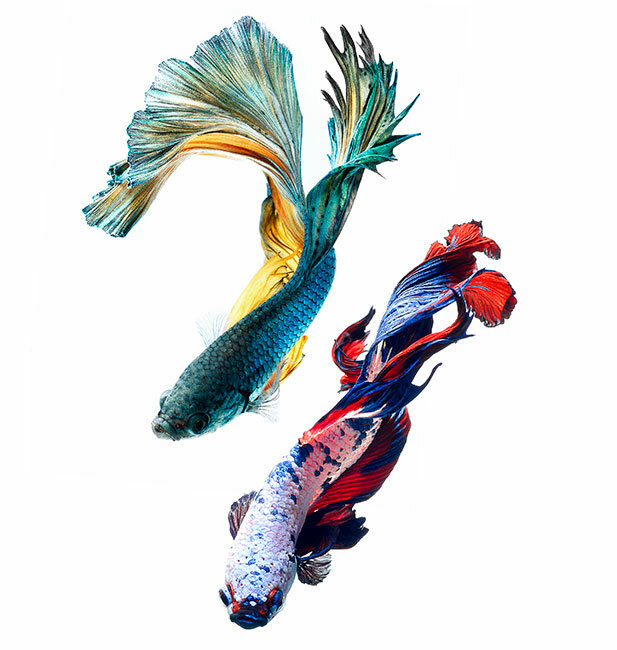
Terrific beautiful fish with martial inclinations, so that two males in one aquarium can not be kept. The size of these underwater inhabitants is 6-10 cm, the females are traditionally smaller and do not have such luxurious fins as their cavaliers.
Advantages:
- Equally well in the water any temperature from +18 to +30 ° C, but without sudden changes;
- Can live in a small aquarium;
- Have a very beautiful bright color and interesting habits;
- Eat any food;
- Lifetime - up to 3 years.
Disadvantages:
- are unfriendly towards each other and do not get along with phlegmatic fish;
- Are prone to overeating and as a result give a large amount of waste;
- They can jump out of the aquarium.
Males of males do not like sudden temperature changes. For their purchase, it is better to choose a warm season, and use a thermos for transportation.
Marble with gourami
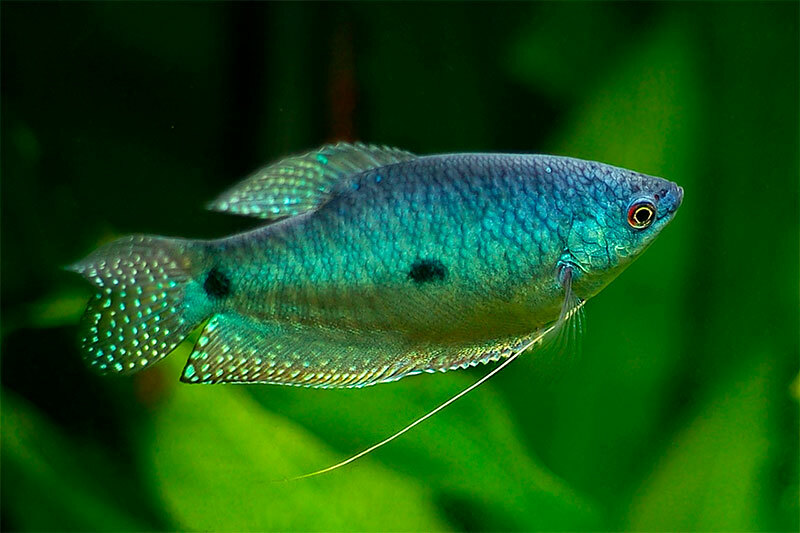
Curious moving fish with an interesting spotted color. Peaceful to other neighbors, although occasionally and among them there are individuals who are bully. In a large aquarium grow up to 15 cm. Despite the rather large size, gurus do not know how to stand up for themselves - this must be taken into account when choosing "neighbors".
Pluses:
- Large enough and beautiful;
- Labyrinth breathing allows gurus to live in a small volume of water, although in this case they grow worse;
- They are omnivorous, but they need a living food;
- With good care can live more than 7 years;
- Easy to reproduce.
Disadvantages:
- Get along not with all the fish, and more often they themselves are broken;
- Are prone to overeating;
- Adult individuals require at least 80 liters to move to the aquarium;
- After spawning the female needs to be planted separately from the "daddy" guarding the caviar so that it does not kill it.
Make sure that every male has his own female, otherwise the fish will shit. In extreme cases, you can just take care of natural shelters for singles, like thick plantings of algae.
What aquarium fish for a beginner to buy
1. Did the child persuade him to buy an aquarium? First of all, make him mollies or swordsmen - it's easy to care for them.
2. Guppies are suitable for the first experience, but only the cheapest and "mongrel" - bright imported fishes are more likely to die after transplantation.
3. Do you want a round classic aquarium with a minimum of inhabitants? Then buy a gold veiled tuna fish.
4. If you prefer active pets, which are interesting to watch, you can stop at zebrafish.
5. In a large aquarium that simultaneously plays the role of interior decoration, it is better to keep cichlase. But it is not worthwhile to add other fish to them.
6. In a small room, a tall flat aquarium with skalarians will look no less beautiful.
7. If you often leave home for a few days or do not have time to carefully care for the aquarium, it is better to stop at the representatives of the labyrinth family. Gourami and males can live even in polluted water.
8. . Whichever fish you choose, do not forget to buy yourself a help for the catfish-cleaners. For beginners the corridor and ancistrus would be the best choice.

